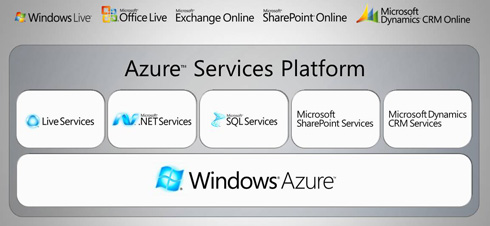Microsoft wants in on cloud computing. At the company’s Professional Developer’s Conference today, Microsoft’s chief software architect Ray Ozzie announced Windows Azure, its “internet-scale cloud services platform hosted in Microsoft data centers.” Windows Azure will only be open as a technology preview to a very limited number of developers for now, and no pricing details have been revealed that I can find. But this is basically Microsoft’s answer to Amazon’s Web Services and cloud computing initiatives from other enterprise IT players, including everyone from IBM to RackSpace.
Azure will run Windows servers and the .Net framework in the cloud as a hosted, pay-as-you go service. It will be part of what Microsoft is calling Live Services, and it will run Live apps, .Net apps, SQL server, Sharepoint servers, and Microsoft’s Dynamics CRM. No wonder Amazon added support for Windows servers and SQL servers to EC2 just last week.
Here is how Microsoft is describing Azure:
The Azure™ Services Platform is an internet-scale cloud computing and services platform hosted in Microsoft data centers. The Azure Services Platform provides a range of functionality to build applications that span from consumer web to enterprise scenarios and includes a cloud operating system and a set of developer services. Fully interoperable through the support of industry standards and web protocols such as REST and SOAP, you can use the Azure services individually or together, either to build new applications or to extend existing ones
If computing is truly going to the cloud (and it is), Microsoft needs to be there as well. But this is not an agnostic cloud. Azure appears to be geared to run those apps already tuned to run on Microsoft software or written in Visual Studio. But what if an IT manager wants to port apps running on Linux in his data center? Don’t be surprised if Azure offers tools to “transition” those apps to a Microsoft’s environment (albeit, a hosted one). At least there seems to be a commitment to support a wide range of open-source development tools, and to make data importable and exportable via many different protocols such as HTTP, REST, SOAP, and XML.
The battle for the clouds has just begun.
Update: Here is Steve Gillmor’s take.

(Photo by Nicholas T.).
